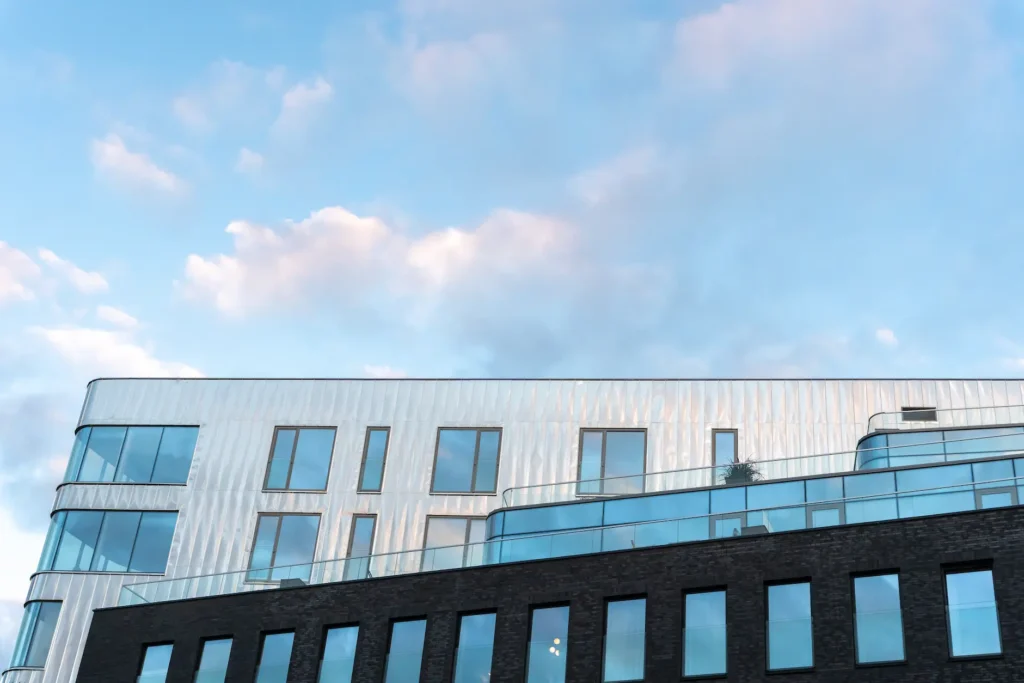Facade cladding systems are used to protect the exterior surfaces of buildings and give them an aesthetic appearance. These systems not only increase the durability of structures against external factors but also provide energy efficiency. Facade cladding has become an indispensable part of modern architecture, offering architects unlimited possibilities with various material and design options.
In this article, we will provide detailed information about facade cladding systems, discussing their types, applications, and the benefits they offer.
Types of Facade Cladding Systems
Facade cladding systems can be categorized based on the materials used and the installation methods. Here are the most commonly preferred types of facade cladding:
1. Aluminum Composite Panel Cladding
Aluminum composite panels are widely used in facade cladding due to their lightweight and durable nature. They offer aesthetically rich designs with a wide range of colors and textures. This system, preferred especially in commercial buildings, is resistant to harsh weather conditions.
2. Ceramic Cladding Systems
Ceramic facade cladding systems stand out with their natural stone appearance and long-lasting structure. This system is frequently used in modern and stylish projects. Ceramic materials are resistant to fire and scratches.
3. Glass Facade Systems
Glass facade cladding gives buildings a contemporary appearance. Frequently used in office buildings, shopping centers, and hotels, this system increases the use of natural light in interiors and provides energy savings.
4. Stainless Spider Systems
This system, used especially in buildings with large openings, adds a minimalist aesthetic to buildings. It combines glass surfaces with stainless steel connection elements, offering both durability and transparency.
5. Wooden Cladding Systems
For those who prefer natural materials, wooden cladding systems offer a warm and natural appearance. It is commonly used in villa projects or boutique hotels.
Benefits of Facade Cladding Systems
Facade cladding systems offer numerous advantages both functionally and aesthetically:
- Provides Insulation: Reduces energy costs by improving heat and sound insulation.
- Increases Durability: Provides protection against weather conditions (rain, sunlight, wind).
- Aesthetic Appearance: Adds aesthetic value to buildings with different design and material options.
- Long Lifespan: When applied with high-quality materials, it can be used for many years without requiring maintenance.
Applications of Facade Cladding Systems
Facade cladding systems can be used in different building types:
- Commercial Buildings: Shopping centers, hotels, office buildings
- Residential Projects: Villas, residences, apartment complexes
- Industrial Buildings: Factories, warehouses
- Public Buildings: Hospitals, schools, municipal buildings
How to Make the Right Choice in Facade Cladding Systems?
There are certain criteria to consider when choosing a facade cladding system:
- Climate Conditions: The material selection should be suitable for the climate conditions of the region.
- Building Function: Material selection should be made based on the type of building, whether commercial or residential.
- Aesthetic Preferences: Colors and patterns should be chosen that complement the overall architectural design of the project.
Facade cladding systems are one of the cornerstones of modern architecture. These systems enhance the appearance of buildings and provide long-lasting protection. When the right material and design are chosen with a professional team, your projects will stand out in terms of both aesthetics and functionality.
For more information and to receive consultancy services about facade cladding systems for your projects, you can contact us.

